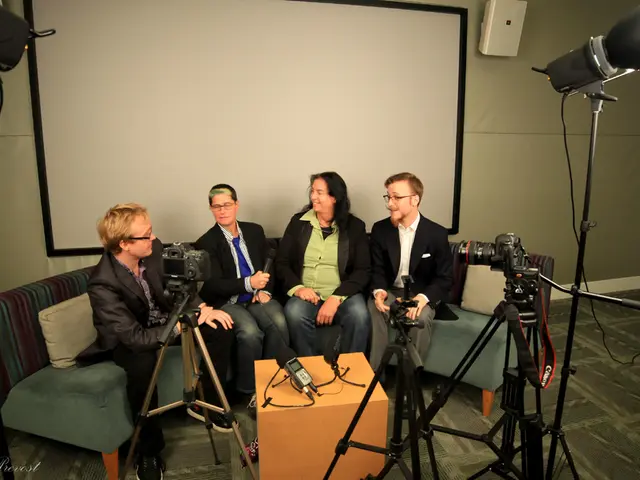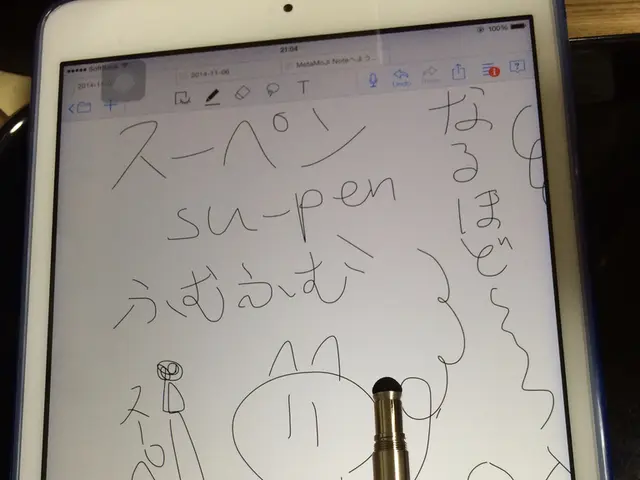Ancient Calculation Method: Mental Arithmetic Preceding the Digital Era using Abacuses
The ancient tool, the abacus, has proven to be more than just a calculating device. Studies show that using the mental abacus method can strengthen working memory, attention, processing speed, mental visualization, and cognitive flexibility, contributing to overall mental agility [1][2][3].
Originally consisting of rows of beads strung on rods, each representing units, tens, hundreds, and so on, the abacus allows for fast, complex calculations [2]. Advanced abacus users can even calculate square and cube roots mentally [2]. Remarkably, children as young as 5 can begin abacus training and within a few years, they can mentally solve multi-digit equations at astonishing speeds [2].
One of the key advantages of abacus training is its impact on visuospatial working memory. Children who undergo abacus training experience significant improvements in this area, which is the brain's ability to hold and manipulate spatial and visual information temporarily [1]. This improvement is linked to enhanced brain plasticity and functional changes in brain activation and connectivity [1].
Abacus use also strengthens attention span and the ability to concentrate on tasks. The physical manipulation of beads requires continuous focus and mental engagement, skills that transfer to other learning areas and daily activities [2][3].
Moreover, abacus training exercises and expands working memory, leading to better memory retention and information processing [2]. Fast mental calculations on the abacus improve processing speed and cognitive flexibility, enabling users to switch quickly between different tasks or problem-solving strategies [2].
The visual-spatial nature of the abacus encourages students to visualize the beads and calculations mentally, strengthening spatial reasoning and mental imagery capabilities [2]. These visualization skills support problem solving and analytical thinking beyond mathematics [2].
By making abstract math concepts concrete and visual, abacus training boosts learners' confidence and enjoyment of math, reducing anxiety and promoting sustained engagement with numerical learning [2]. The benefits of abacus training extend beyond quick math, affecting cognitive functions like memory, visual-spatial reasoning, and cross-hemisphere communication [1][2][3].
Functional MRI studies show that trained abacus users activate brain regions involved in visual-spatial imagery, not just traditional math areas [1]. Modern tools, such as brain games and nutritional support, can help tap into similar strengths as the abacus [1].
The story of the abacus offers inspiration for supporting a child's learning, staying mentally sharp, or understanding how the mind works. Any practice that builds visual-spatial reasoning and mental calculation can engage the same cognitive mechanisms as abacus training [1].
Certain nootropics, such as Citicoline, Phosphatidylserine, Bacopa Monnieri, L-theanine + Caffeine, have been studied for their potential to enhance working memory, attention span, and mental agility [1]. Mental visualization, short-term memory, and sustained attention are relevant skills in a world that demands flexible, focused thinking [1].
Adequate rest, nutrition, hydration, and stress management are essential for sustained cognitive clarity. Over time, mental abacus use sharpens attention regulation [1]. After extensive training, some abacus users can perform calculations mentally by visualizing the movement of beads [1].
The abacus, with its origins dating back over 2000 years, has evolved into the modern Japanese soroban [1]. Its enduring use attests to its effectiveness in fostering cognitive development. In today's fast-paced world, the benefits of abacus training remain as relevant as ever.
References: [1] https://www.ncbi.nlm.nih.gov/pmc/articles/PMC6353089/ [2] https://www.ncbi.nlm.nih.gov/pmc/articles/PMC6528320/ [3] https://www.ncbi.nlm.nih.gov/pmc/articles/PMC6939196/
The abacus, through its impact on visuospatial working memory, significantly improves a child's ability to hold and manipulate spatial and visual information temporarily, enhancing their learning experience in education-and-self-development. As children undergo abacus training, they not only develop their mental agility through faster, complex calculations, but also strengthen abilities like attention span, processing speed, and cognitive flexibility, which are essential for technology-based learning and beyond.








